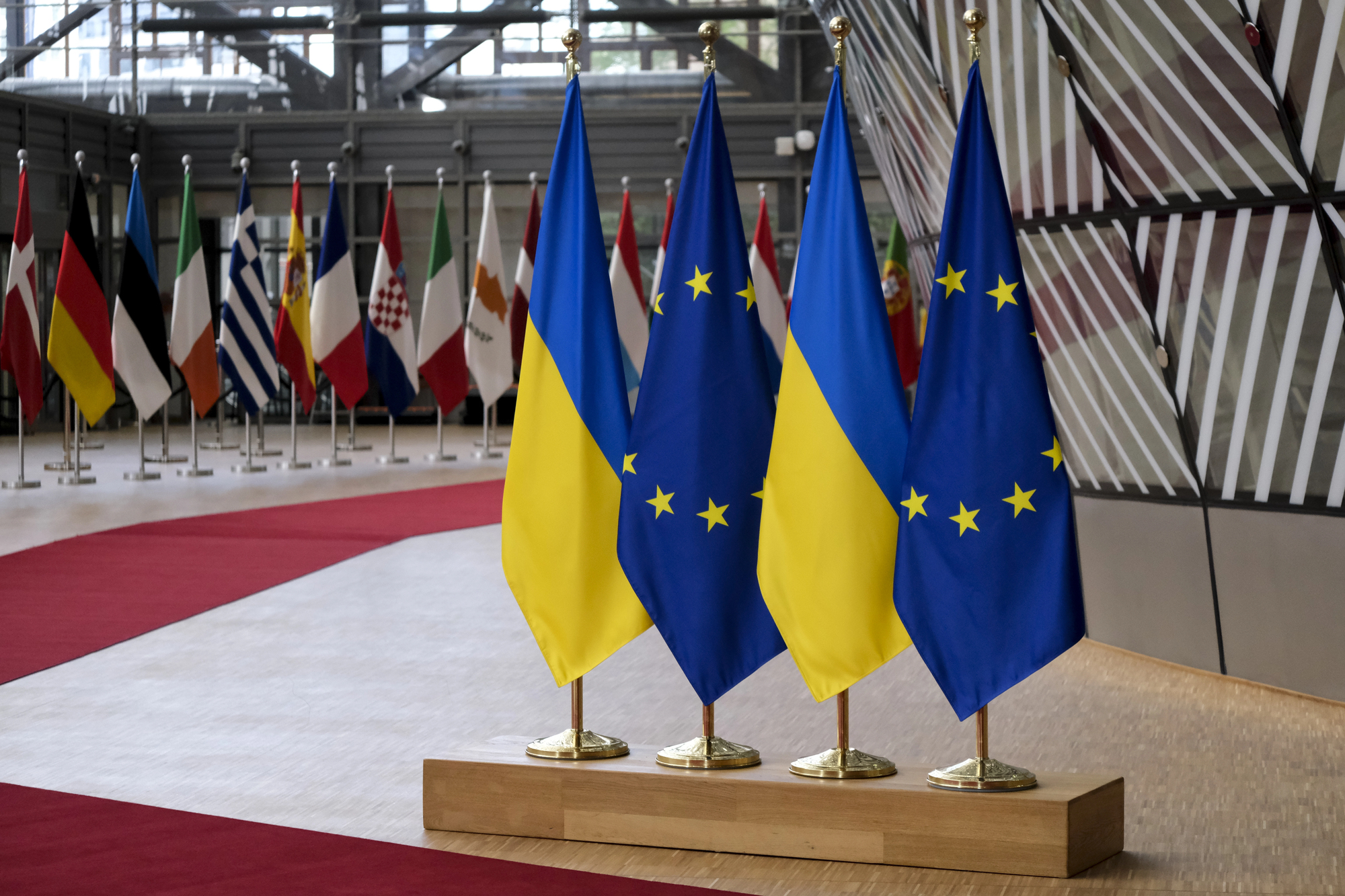To operate on a certain destination, an airline has to obtain a permission from the State Air Traffic Service. The rationale behind this requirement is safety and regularity – an airline has to prove that it is able to carry passengers on a given route safely and in time. Until 2013, provision of permissions to operate routes was regulated by the State Air Traffic Department (SATD) Order adopted in 1996.
A bit of context
This Order was updated in April 2013, with the main changes being
(1) an opportunity to recall the permission if a route was not operated by an airline for over a year (which increased efficiency of the market, since routes could be redistributed from less efficient to more efficient airlines),
(2) the list of criteria which should be taken into account by the Commission deciding on granting rights for a route, and
(3) participation of the Ministry of Infrastructure representatives in this Commission together with SATD representatives.
During the last decade, there was much talk about introduction of the European “open sky” policy in Ukraine. By and large, the entrance of Wizzair onto Ukrainian market was a “pilot project” to test the consequences of this policy for the country. I believe, passengers are satisfied with this experiment, but there are other stakeholders who are obviously not. Therefore, Ukrainian sky remains “closed” for foreign airlines (they can enter only via interstate bilateral agreements, and on the reciprocity basis).
Moreover, recently drafted new order of assigning routes to air carriers significantly limits competition and practically prohibits entry.
The main novels
A new version of the Order was prepared by the State Air Traffic Service (SATS) in October 2014, and is already registered by the Ministry of Justice. However, it is not published yet, so it did not come into force. The project of the document created much fuss in the media, and Wizzair Ukraine airline even threatened to exit Ukrainian market if these rules are enacted, although later lowered its threat. The main changes proposed by the new version of the Order are discussed below.
The first, and most striking, are the restrictions imposed on the airlines willing to obtain the right to perform international flights.
Firstly, such an airline should be over 50% Ukrainian-owned. Secondly, this airline should operate domestic flights for at least a year. Thirdly, the maximal number of international routes an airline can operate is defined as 15*number of “crowded” domestic flights + 30*number of “not crowded” domestic flights – number of international flights it already operates. Thus, a carrier operating, say, “Kyiv-Lviv” flight for a year, can obtain the right for up to 15 international routes, while a carrier operating “Lviv-Uzhorod” flight for a year, can obtain up to 30 international routes. Moreover, carriers not satisfying these criteria would be deprived of the right to perform international flights (that’s why Wizzair is so worried).
These provisions are very discriminatory both for foreign airlines and for small Ukrainian airlines, and they practically prohibit new entry. Ukrainian internal market for air traffic is too small (e.g. in 2013, internal passengers constituted just 15% of passengers carried by Ukrainian airlines; air routes operated between 14 cities – this is probably the highest possible amount – and now three of these cities are off the list). A new airline cannot profitably operate a domestic route because the demand is too low and is already served by existing carriers, so it has to cross-subsidize domestic flights by either international regular or charter routes (by the way, Ukrainian government has always viewed development of domestic air connections as a kind of a “social mission” of airlines thus implicitly recognizing that they are not profitable).
However, if an airline wants to operate a charter flight, it must first obtain the permission of a regular Ukrainian carrier operating the same route (except for flights to resort airports). Under the current rules, an airline has to present its contracts with clients willing to fly these charter routes, which is at least logical, but obtaining the permission of an incumbent competitor to enter the market is very strange.
At the same time, a requirement of zero overdue payments to Ukrainian air navigation services or state-owned airports is withdrawn.
Second, a scale for evaluation of airlines who applied for a given route is introduced (see Table 1 below). While introduction of the scale in principle should raise transparency, and therefore should be viewed as a progressive novel, the scale proposed by SATS clearly favors large airlines and leaves very little chance for small ones.
Table 1. Comparison of current and proposed criteria for obtaining the right to operate an air route
| Current rules (adopted in April 2013) | New rules (project) |
| While considering a decision to grant the rights for a route to a carrier, the commission takes into account:
1) usage of routes by carrier (% of routes actually used) |
While considering a decision to grant the rights for a route to a carrier, the commission considers the following criteria:
1) usage of routes by carrier (% of routes actually used) – 10 points for internal and 10 points for international routes Note: business-plan for 3 years need to be submitted but it is not one of the selection criteria |
Under the current rules, the Commission takes into account airline efficiency (criteria 1, 5, 6), safety (criterion 3), regularity (criterion 2), B2B cooperation (criterion 7) and social responsibility (criterion 4). New rules propose to take into account applicant’s size (criteria 3, 4, partly 2), efficiency (criterion 1), and social responsibility (criteria 5 and partly 2). So under the new rules safety and regularity will no longer be the criteria for selection of a carrier for a route, which is a violation of the airline industry axiom mentioned above.
Third, the list of documents an airline has to supply to the Commission when applying for a new route has also changed. Under the new rules, airlines would not be required to submit their Program of aviation safety and copies of certificates of airworthiness for the aircrafts (another good-bye to safety) but will have to submit the number of employees, payments to the budget and information about people or legal entities with a control stake at them.
Finally, the Ministry of Infrastructure is again deprived of the right to participate in the Commission assigning destinations to airlines.
Winners and losers
As any reader of a crime story knows, a question “Who benefits?” is always raised by a detective chasing a criminal. We will try to answer this question too but with an exclusion method – firstly determining who loses.
Losers 1. Passengers. As everyone knows, competition lowers prices. Therefore, limiting competition (and the new regulation simply kills it) raises prices. In response to the Forbes article accusing Wizzair of non-introduction of allegedly promised low-cost domestic flights, I would say – Wizzair did not introduce cheap domestic flights not because it was given a preferential treatment (look at domestic prices of other airlines, they are quite high) but because other low-costers were not allowed to enter.
Losers 2. Potential new entrants. As already mentioned, Ukrainian domestic air flight market is quite small. As Table 2 shows, airlines carried only 11% of passenger-kilometers, and of those only 4.8% were on domestic flights. So if a new airline is required to operate domestic flight(s) for a year before given the right to enter international routes, it will not enter because it will certainly go bankrupt during that year.
Table 2. Transportation by different means of traffic, 2013
| million passengers | share in total | million passenger-kilometers | share in total | |
| Railway | 425,4 | 11% | 49 098,3 | 44% |
| Automobile | 3 340,8 | 88% | 49 091,7 | 44% |
| Water | 7,3 | 0,19% | 77,9 | 0,07% |
| Air | 8,1 | 0,21% | 12 568,2 | 11% |
Source: State Statistics Service
Losers 3. Small domestic airlines. The new regulation foresees that if there are several applicants for one route, the one with the higher number of points is preferred (points are described in the Table 1). And since three of the six point-giving criteria are related to the size of an airline, it is clear that a larger airline will receive a new route in 99% of cases.
Loser 4. The state. First of all, upon the introduction of such an anti-competitive regulation, and especially if Wizzair fulfills its threat and exits, Ukraine will bear huge reputational losses, and already scared foreign investors will be further alienated. Second, if we suppose that the state cares for its citizens, losses of passengers in a form of higher prices and lower number of routes (yes, when entry is restricted, the supply falls!) will be losses of the state. Thirdly, since the state is the owner or partial owner of a few small carriers, it will suffer losses as described above.
And the winner is… (here the drums should sound)
…the largest Ukrainian carrier “Ukraine International Airlines” who would receive the primary right to get new international routes and the mechanism to regulate entry by charter carriers.
Markets structured like the Ukrainian airline market – a large incumbent and a fringe – are quite common. However, usually governments try to undermine the incumbent by either applying anti-monopoly regulation to it or by lowering barriers to entry. I don’t know any case when a government tried to support the incumbent by killing the fringe.
So what could be the reason for such a regulation? We can only speculate. There were news about UIA asking Ukrainian government for $100 billion stabilizing loan. Since the government is now short of funds, perhaps it found an ingenious replacement.
P.S. I tried to find out whether UIA is indeed a Ukrainian carrier. SMIDA site provides the following information about its ownership: 74.16% – JSC “Capital investment project” (Ukraine, code 36843001) and 15.91% – “Ontobet Promotions limited” (Cyprus, code 307420). A little Google exercise showed that JSC “Capital investment project” is owned by “Ontobet Promotions limited”. Perhaps, final beneficiaries of this Cyprus company are Ukrainians, but that is not obvious.
Attention
The author doesn`t work for, consult to, own shares in or receive funding from any company or organization that would benefit from this article, and have no relevant affiliations



